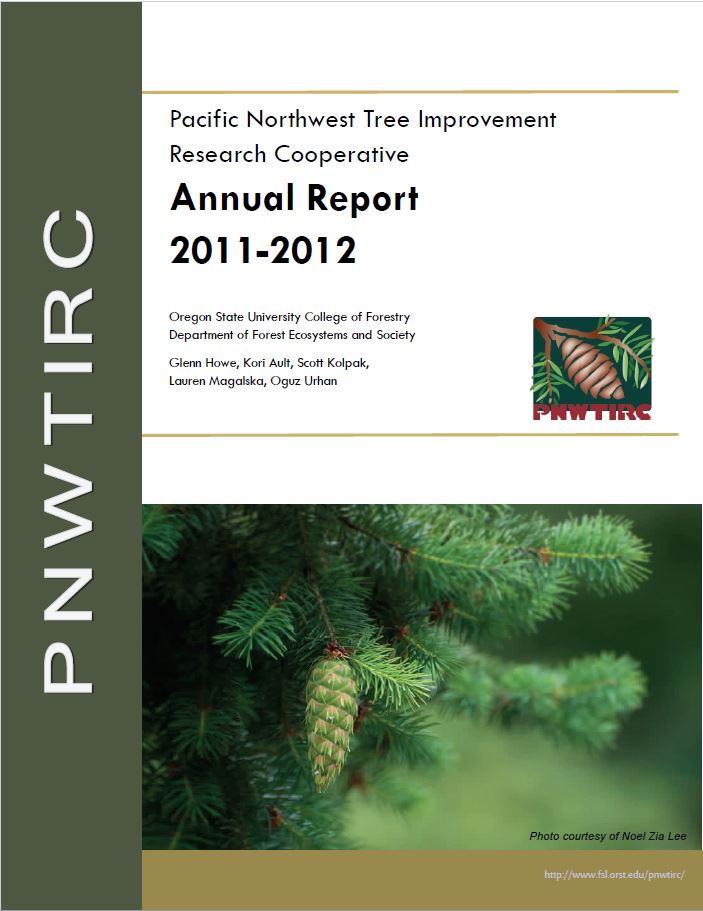Annual Report 2011-12

Highlights of 2011-2012
- Lauren Magalska defended her thesis on September 16, 2011, which was entitled “Identifying site characteristics that explain variation in Douglas-fir site productivity and stem form.” Additional progress on the site characterization project included completing the stem form genetic analyses and updating the site characterization dataset with newly available soils data from the Natural Resources Conservation Service (NRCS).
- We completed the acoustic velocity (wood stiffness) measurements at the remaining progeny test sites of Fir Grove (Douglas-fir) and Toledo (western hemlock). The relative merits of tools, measurement approaches, and sampling techniques were evaluated, and we compared stiffness between Douglas-fir and western hemlock.
- We completed the analysis of the flower, cone, and crown measurements at the Plum Creek Miniaturized Seed Orchard (MSO). These data have undergone statistical analysis, and an outline for the MSO publication has been completed. The MSO data from the Lebanon Forest Regeneration Center and Meridian Seed orchards have been acquired and summarized.
- The Phase II proposal for the Center for Advanced Forestry Systems (CAFS) was awarded. The CAFS webpage includes a description of research areas as well as highlights from current CAFS projects (http://cnr.ncsu.edu/fer/cafs/researchareas.html). There continues to be CAFS funding for the PNWTIRC project entitled “Early genetic selection for wood stiffness in Douglas-fir and western hemlock.”
- We completed the construction of a Douglas-fir SNP genotyping array (Ilumina Infinium) as part of a joint project between the PNWTIRC and the USDA-funded Conifer Translational Genomics Network (CTGN). The resulting genotyping array (‘SNP chip’) can now be used to genotype 5,847 Douglas-fir SNPs. Furthermore, our SNP database may contain as many as ~200,000 true SNPs, and as many as ~69,000 SNPs that could be genotyped at ~20,000 gene loci using an Infinium genotyping array. Ultimately, these genomic resources will enhance Douglas-fir breeding and allow us to use genomic selection to enhance tree breeding.

